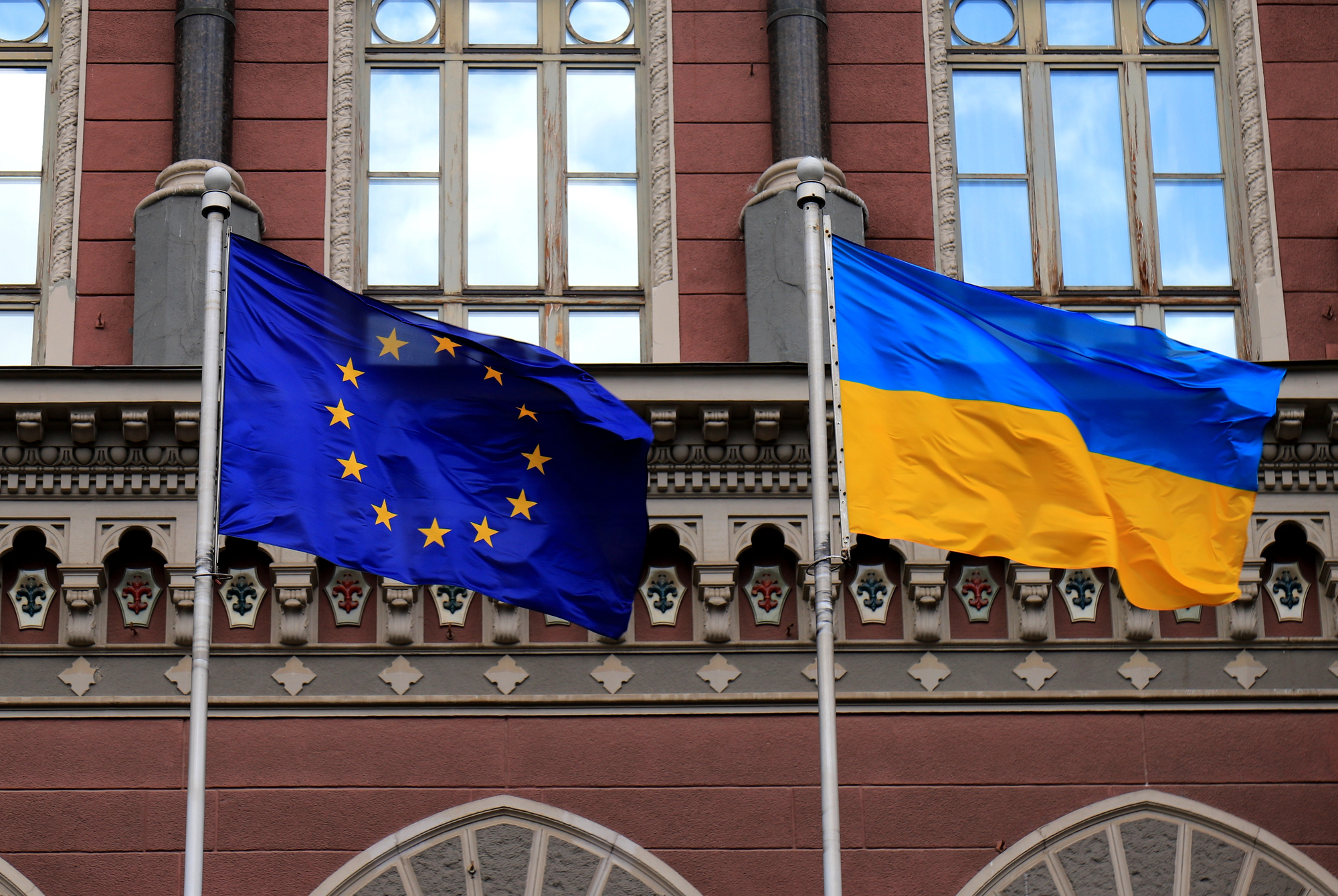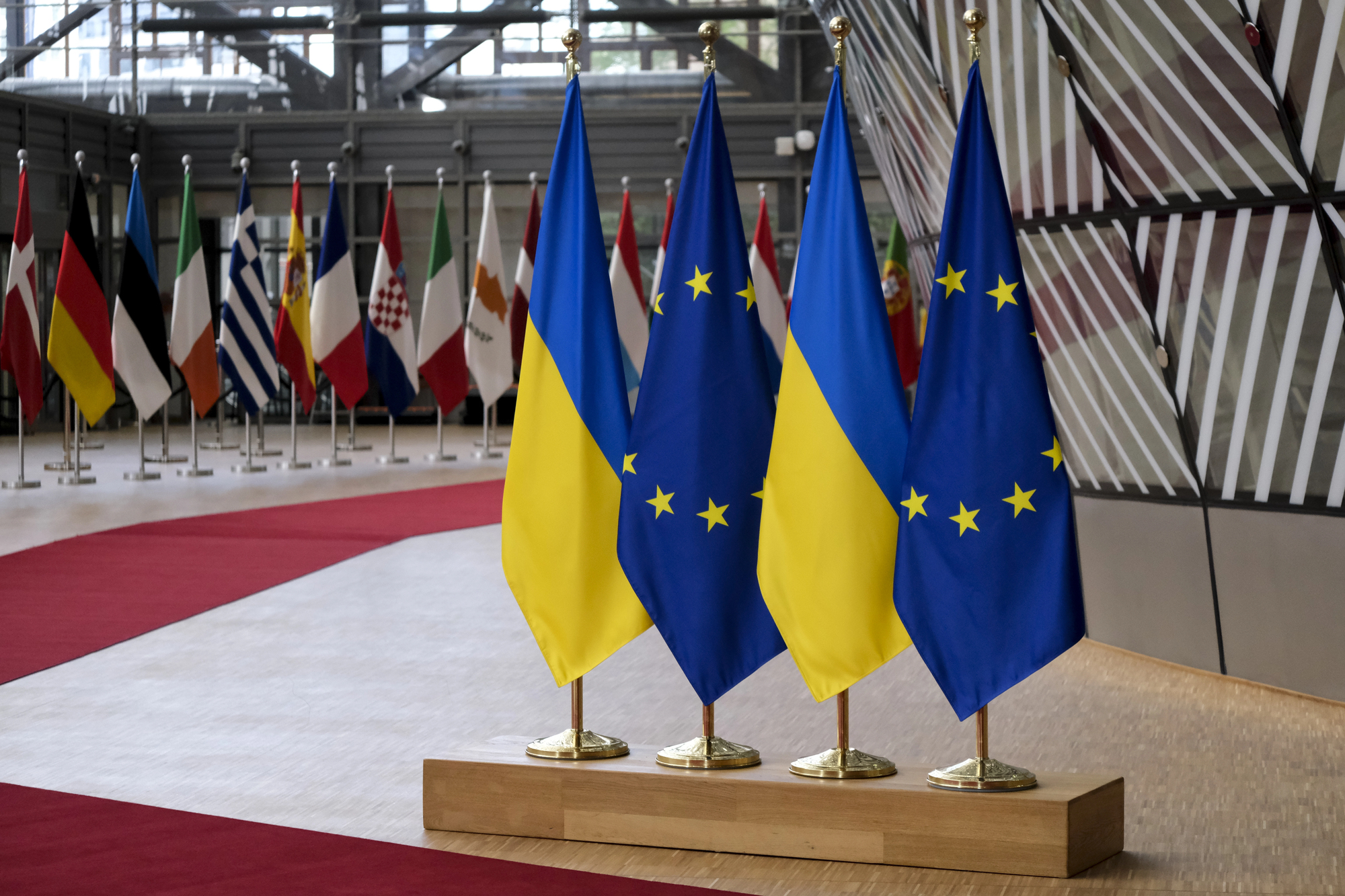Ukraine will be able to get more money for reconstruction if primarily Russia pays for this. In this post we offer a mechanism: Western countries provide reconstruction loans to Ukraine and then get reparations from Russia as repayment of these loans. Under this mechanism, Russia rather than EU taxpayers will be paying for the destruction it has done. Thus, politically this arrangement will be more feasible.
Recently, a group of Ukrainian and international economists outlined an economic plan to rebuild Ukraine with the help of the Western nations after the war with Russia ends. One point there, however, is controversial. Specifically, the Blueprint suggests that the West should allocate funds for this purpose primarily in the form of grants, not loans.
There are disadvantages to this approach. First, convincing Western voters to chip in and rebuild Ukraine is a lot harder than it sounds. In the short term, the Collective West will support and provide aid to Ukraine. But, as time passes, donor “fatigue” will grow. Persuading nations that several generations of their children and grandchildren will have to work for the rehabilitation of another country is tough, and will likely be met with increased resistance. Note that reparation projects of this scale are never financed by a lump-sum, and — through financial intermediaries — require decades. For instance, Germany has been paying reparations for WWI for 92 years. And in democratic societies, an idea that does not find continuing widespread support eventually is abandoned.
Second, it will be even more difficult to explain to Western voters why Europeans and Americans should pay for the consequences of the war that was started by Russia. The West has provided Ukraine with billions of charitable aid and will likely voluntarily provide with tens or maybe even hundreds more. Most Europeans genuinely feel compassion for Ukrainians. Many think that the war Ukraine is fighting is a war for their own future as well. Some of them are also aware of the Budapest Memorandum and its moral obligations. But these ideas are not as common as we want them to be. And helping others by choice is not the same as receiving a bill from Ukraine for a trillion dollars with an insistent request to pay it (as of April 14, the combined losses to infrastructure and economic losses range from about $600 billion to $1 trillion, with the later figure being based on the assumed 30% GDP losses. According to the latest estimates by the World Bank, however, GDP will drop by 45%). It is a difficult idea to sell. This is not even a question of whether the West can afford a one-trillion-dollar bill; it’s a question of whether the taxpayers will view this arrangement as “fair” if Russia is not paying most of the costs. Russia did the crime and needs to do the time; only in this way a lesson will be learned and justice will be served.
Third, if in the future Russia does accept responsibility and starts paying reparations, the Western taxpayers will start to question why they are in debt for decades, and Ukraine — already rebuilt at their expense — is collecting financial compensation from Russia. To many, this will not look fair. The EU or some of its members may seek to recover these reparations by legal or other means.
To summarize:
- Money for Ukraine’s rehabilitation should come from Russia, presumably in the form of reparations.
- These reparations will be the result of a legal process that will drag on for years.
- At the same time, we realize that the money is needed now.
Luckily, there’s a straightforward solution that addresses all the above concerns, while also providing other benefits. Specifically, we propose for Ukraine to use whatever funds the West can afford to gift to Ukraine without negative political consequences and spend them on projects in need of immediate attention: What the authors of the Blueprint call phase #1 “the emergency response” and, perhaps, phase #2 “rapid restoration of critical infrastructure and services.” The other, main share of funds, however, while still coming from the West, should come in the form of loans, not grants (which is the opposite to what the authors of the Blueprint suggest) using future Russian reparations as a collateral with the help of a lien.
The injured party (Ukraine) borrows funds from a third party (Collective West) for reconstruction and at the same time starts a legal battle with the party that created this situation (Russia). The Collective West provides the funds, while immediately imposing a lien on any future settlement, effectively using it as a collateral. Regardless of the outcome of the trial, Ukraine is not being held responsible for reimbursement of the funds (assuming there was no misuse), since ultimately, the defendant is Russia. If Russia does not accept the responsibility (which neither of us expects), no money changes hands. If Russia is found guilty, but the amount of agreed upon reparations is less than the money spent on the reconstruction of Ukraine, then all the reparations are directed to the Collective West and are divided between the individual countries according to their contributions. And finally if Russia is found guilty and the amount of reparations exceeds the amount provided by the West, then Ukraine claims the difference.
In addition to the simplicity and logicality of the scheme, there are other notable benefits. It should be relatively easy to sway the Western public with this idea, which is appealing both morally and financially. Indeed, here, it’s ultimately the criminal that will be paying the price, and the West — while restoring Ukraine — will not just be paying the bills, but will be investing the taxpayers’ money, which they will eventually receive back with interest.
There are also non-trivial benefits to Ukraine. First, it will not have to struggle to get the money from Russia every year for the next 50+ years; this problem will be shifted to the Collective West (which, we are sure, will be interested in ensuring swift and timely transactions, year after year). Second, Ukraine will actually be able to get more money if it comes in the form of a loan, rather than a gift, which might benefit it long-term.
Attention
The authors do not work for, consult to, own shares in or receive funding from any company or organization that would benefit from this article, and have no relevant affiliations


